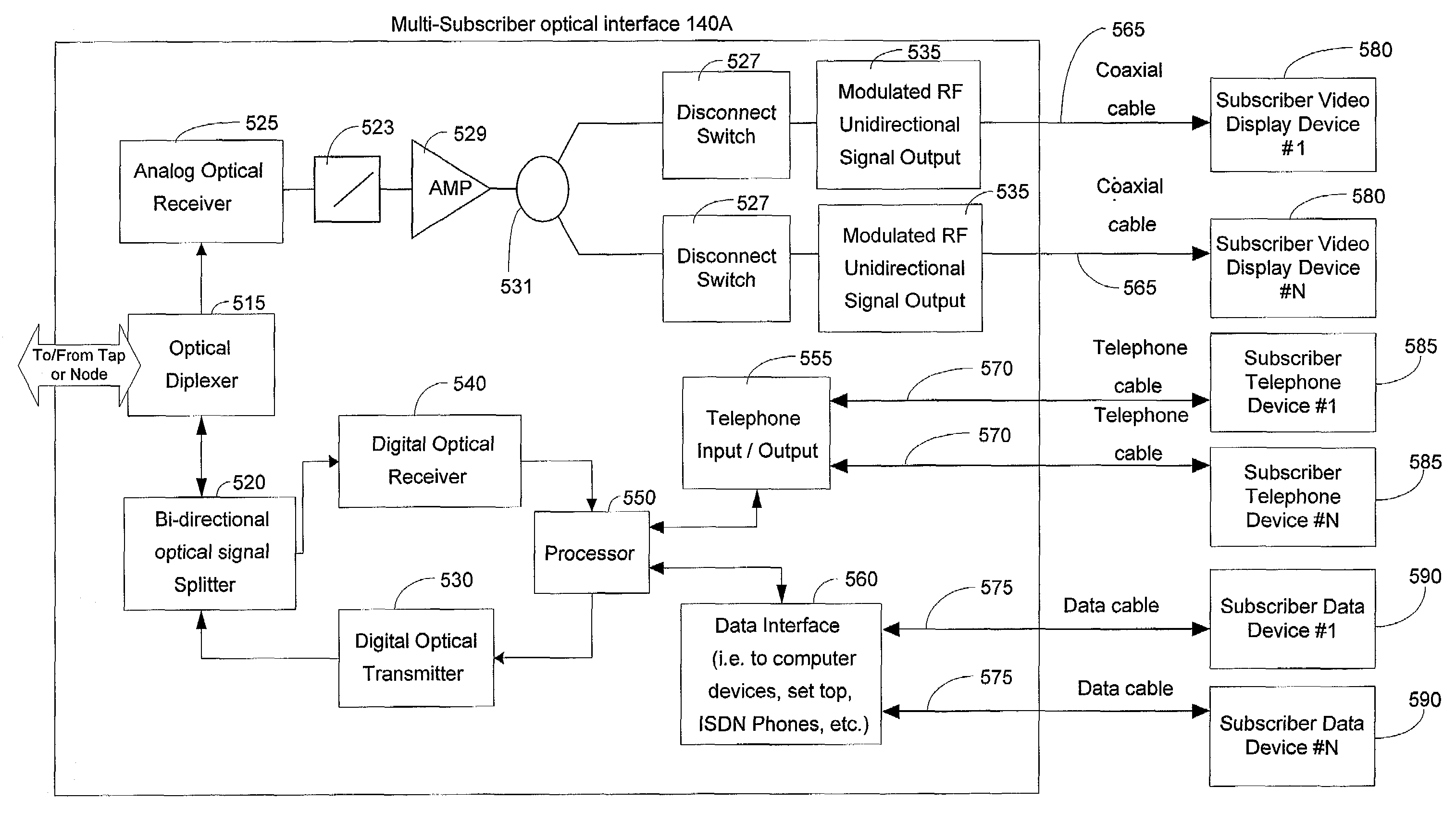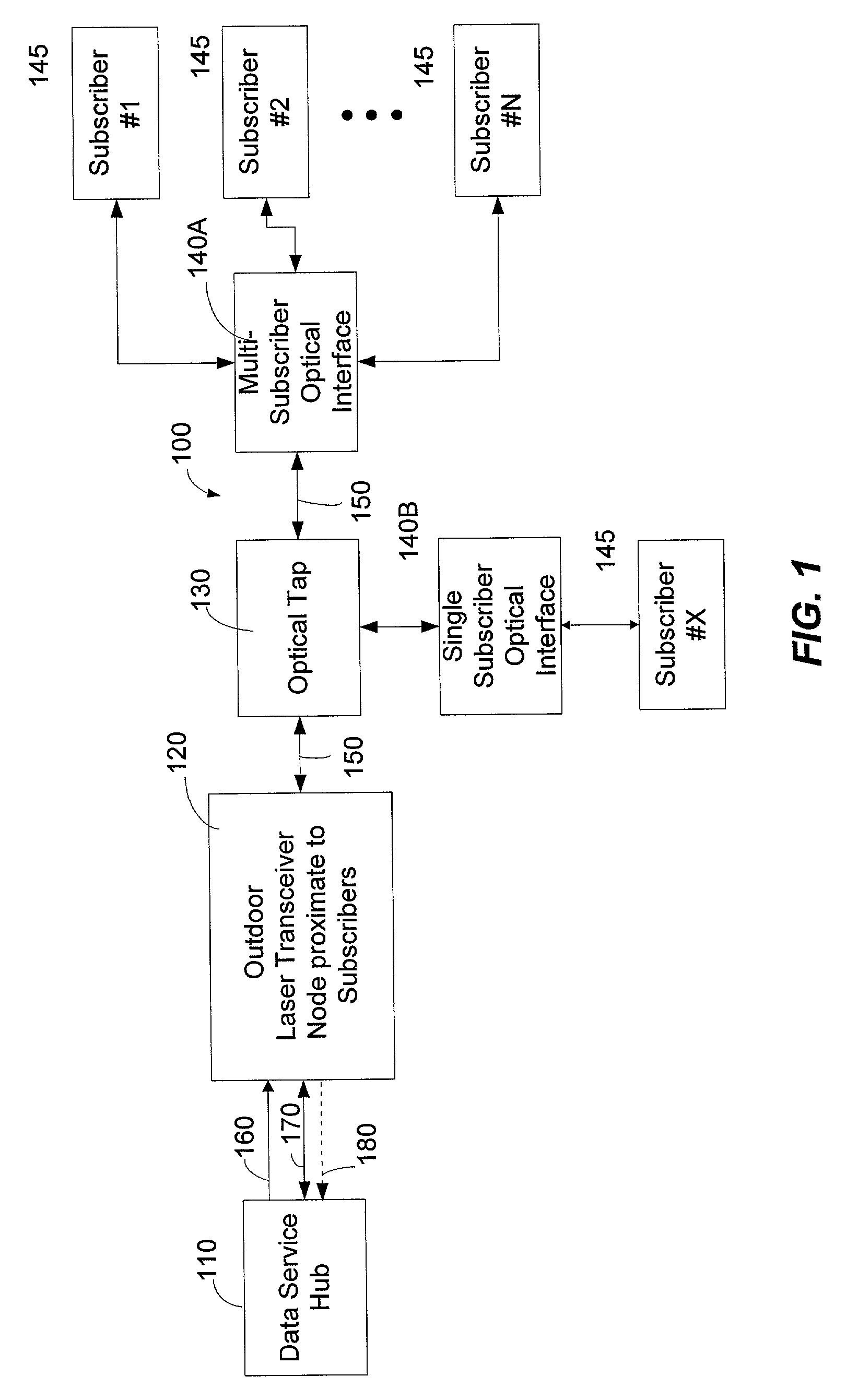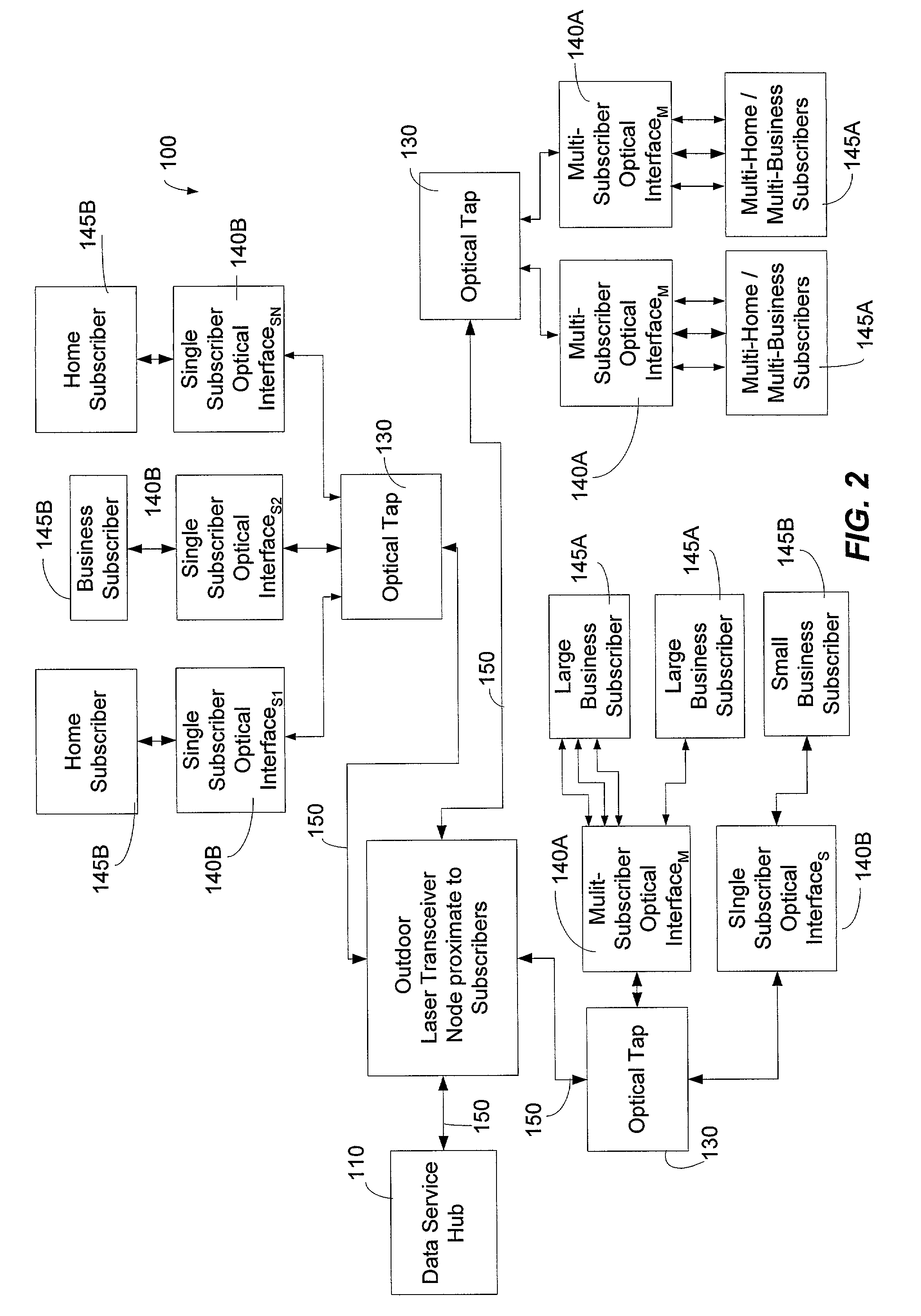System and method for communicating optical signals to multiple subscribers having various bandwidth demands connected to the same optical waveguide
- Summary
- Abstract
- Description
- Claims
- Application Information
AI Technical Summary
Benefits of technology
Problems solved by technology
Method used
Image
Examples
Embodiment Construction
[0044]An optical network architecture according to the present invention can include a multi-subscriber optical interface that can service a plurality of subscribers that are located in very close proximity relative to one another. For example, the multi-subscriber optical interface can service multiple dwelling units such as an apartment complex that has many different subscribers of the optical network system. In addition to servicing multiple subscribers that are located in very close proximity relative to one another, the present invention can also service many different types of subscribers with the same multi-subscriber optical interface. That is, the multi-subscriber optical interface can service personal-use subscribers with relatively modest bandwidth demand while servicing businesses that may have relatively high bandwidth demand.
[0045]The multi-subscriber optical interface can be part of an optical network system that also employs single subscriber optical interfaces. In ...
PUM
 Login to View More
Login to View More Abstract
Description
Claims
Application Information
 Login to View More
Login to View More - R&D
- Intellectual Property
- Life Sciences
- Materials
- Tech Scout
- Unparalleled Data Quality
- Higher Quality Content
- 60% Fewer Hallucinations
Browse by: Latest US Patents, China's latest patents, Technical Efficacy Thesaurus, Application Domain, Technology Topic, Popular Technical Reports.
© 2025 PatSnap. All rights reserved.Legal|Privacy policy|Modern Slavery Act Transparency Statement|Sitemap|About US| Contact US: help@patsnap.com



